 Creepy
Creepy  Creepy
Creepy  Technology
Technology 10 Scientific Breakthroughs of 2025 That’ll Change Everything
 Our World
Our World 10 Ways Icelandic Culture Makes Other Countries Look Boring
 Misconceptions
Misconceptions 10 Common Misconceptions About the Victorian Era
 Mysteries
Mysteries 10 Strange Unexplained Mysteries of 2025
 Miscellaneous
Miscellaneous 10 of History’s Most Bell-Ringing Finishing Moves
 History
History 10 Great Escapes That Ended Right Back in Captivity
 Weird Stuff
Weird Stuff 10 Fascinating Things You Might Not Know About Spiders
 Food
Food 10 Everyday Foods You Didn’t Know Were Invented by the U.S. Military
 History
History 10 Odd Things Colonial Americans Kept at Home
 Creepy
Creepy 10 More Representations of Death from Myth, Legend, and Folktale
 Technology
Technology 10 Scientific Breakthroughs of 2025 That’ll Change Everything
 Our World
Our World 10 Ways Icelandic Culture Makes Other Countries Look Boring
Who's Behind Listverse?

Jamie Frater
Head Editor
Jamie founded Listverse due to an insatiable desire to share fascinating, obscure, and bizarre facts. He has been a guest speaker on numerous national radio and television stations and is a five time published author.
More About Us Misconceptions
Misconceptions 10 Common Misconceptions About the Victorian Era
 Mysteries
Mysteries 10 Strange Unexplained Mysteries of 2025
 Miscellaneous
Miscellaneous 10 of History’s Most Bell-Ringing Finishing Moves
 History
History 10 Great Escapes That Ended Right Back in Captivity
 Weird Stuff
Weird Stuff 10 Fascinating Things You Might Not Know About Spiders
 Food
Food 10 Everyday Foods You Didn’t Know Were Invented by the U.S. Military
 History
History 10 Odd Things Colonial Americans Kept at Home
Top 10 Facts You Didn’t Know About World War I
World War I was one of the most destructive wars known to man until World War II came along. Although the politics of the day had laid the foundation of the war, the whole thing came to a head after the assassination of Archduke Franz Ferdinand of Austria and his wife, Sophie, by a Serbian nationalist.
However, prior to the assassination, several countries and empires had been seeking means of expanding their territories, countering the expansion of other empires, and avenging their losses from past wars. This made most of them form alliances. By the time that the archduke was assassinated, their alliances dragged them into a war that was none of their business.
10 The Three Empires At The Center Stage Were Ruled By Cousins
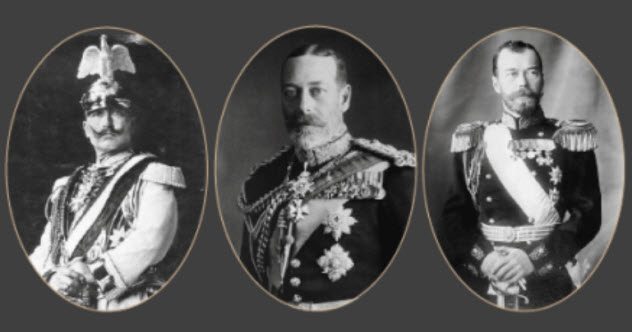
Germany, Russia, and Britain—the three empires at the center stage of World War I—were ruled by cousins. Kaiser Wilhelm II of Germany and King George V of England were first cousins, King George V and Tsar Nicholas II of Russia were first cousins, and Tsar Nicholas II and Kaiser Wilhelm II were third cousins.
Considering that the three emperors were descendants of King George II of England, Wilhelm’s II mother was a sister to George V’s father, and George V’s mother and Nicholas II’s mother were sisters, the three emperors were also fifth cousins.
Back then, Queen Victoria was called the “Mother of Europe” because she was closely related to the emperors of most European empires. For instance, George V and Wilhelm II were her grandsons. However, she discouraged any relationship between the duo and never wanted them together. She even stopped the two from visiting her at the same time.
George V’s mother, Princess Alexandra of Denmark, also discouraged any fraternization between George V and Wilhelm II. However, she ensured that George V maintained a close relationship with Nicholas II, the son of her sister, Dagmar. The cousins maintained the rivalry and alliance by the time they became emperors.
Although the trio never believed that the assassination of Archduke Franz Ferdinand of Austria would lead to war between Serbia and Austria-Hungary, they knew it could. And such a war would definitely drag them in because Austria-Hungary was allied with Germany and Serbia was allied with Russia. At the same time, Russia was allied with France and France was allied with Britain.[1]
The cousins had lost the power to stop the war by the time it became imminent. The assassination and subsequent crises had been hijacked by army generals, politicians who were more concerned with “national pride,” and arm dealers who just wanted to make money.
9 Russia Begged Germany To Stop The War

World War I officially started on July 28, 1914, the day that Austria-Hungary declared war on Serbia. That same morning, Nicholas II sent a telegram to Wilhelm II begging him to stop the war. The telegram was partly informal, and Nicholas II even signed it with his nickname, Nicky.
Nicholas II explained that a war against Serbia would lead to the involvement of Russia, which was something he did not want. Wilhelm replied that the impending war had no political undertone and was merely to deal with the people who had assassinated the archduke. He added that he was doing his best to ensure that Austria-Hungary reached an agreement with Russia. He also signed the telegram with his nickname, Willy.
The cousins continued exchanging telegrams. However, they failed to reach an agreement even though neither wanted the war. At one point, Wilhelm suggested that Austria-Hungary troops marched into Belgrade, Serbia, without attacking the Serbians and waited while Serbia destroyed the Black Hand terrorist group that had assassinated the archduke.
He instructed his chancellor to forward this suggestion to Russia, but the chancellor instructed the German ambassador to Russia to inform Russia that Germany would mobilize its military in response to Russia’s mobilization.
Both emperors continued exchanging telegrams but still didn’t reach a conclusion. They didn’t stop mobilizing their armies, either. Neither did they do anything to delay the war. On August 1, a few days after the first telegram was sent, Germany declared war on Russia.[2]
8 It Made Russia Communist
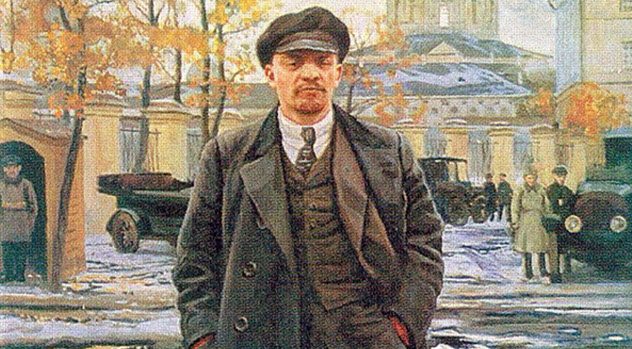
Most likely, Russia would never have been a communist country if Vladimir Lenin hadn’t come to power. His political ascent wouldn’t have happened if the two 1917 Russian revolutions hadn’t occurred. And those revolutions probably wouldn’t have happened if Russia had not been involved in World War I.
The war took its toll on the Russian economy. It was longer than expected, and there was no hope that Russia would win. After a series of defeats, Tsar Nicholas II fired his inexperienced cousin, whom Nicholas II had appointed as general, and took control of the army himself. This was going to be his undoing. In the past, the empire had blamed military failures on the generals, but now, it would be blamed on the tsar himself.
Nicholas II committed another blunder when he handed control of the empire to his wife, Alexandra, instead of a prime minister. First, Alexandra was German, something that did not resonate well because Russia was fighting Germany. Then, Alexandra became too involved with Grigori Rasputin, a controversial faith healer whom she hoped would cure her son of hemophilia.
However, Rasputin had other intentions and soon started meddling in national issues. In December 1916, some concerned Russians murdered Rasputin. But this changed little because he had already smeared the tsar’s family. At the same time, the prolonged war had taken a toll on the Russian economy.
In February 1917, inflation and food shortages caused widespread protests that quickly turned into a revolution. Nicholas left the front lines to return home. But he never made it to his palace before he was forced to abdicate. A provisional government took over but did little to solve the grievances that had caused the revolution.[3]
A second revolution led by Vladimir Lenin of the Bolshevik Party followed in November 1917. It toppled the provisional government and swept Lenin into power. All he did was to promise the Russian people “peace, bread, and land.”
Lenin also entered negotiations with Germany, leading to the March 1918 Treaty of Brest-Litovsk that ended Russia’s involvement in World War I. Russia ceded Ukraine, Finland, Poland, and the Baltic territories to Germany. In exchange, Germany retreated from Russia.
7 It Resulted In The Collapse Of Three Empires And The Founding Of Several Countries
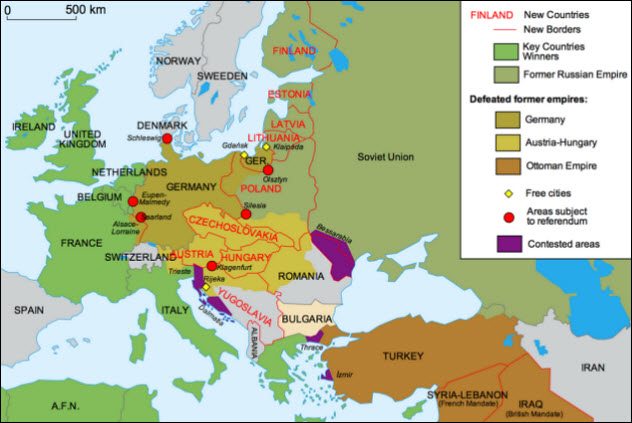
World War I changed European and Asian borders forever. It led to the fall of three empires and the creation of several countries. The German, Ottoman, and Russian empires collapsed at the end of the war. Poland became independent of the Russian Empire and Austria-Hungary was split into Austria, Hungary, Czechoslovakia, and Yugoslavia.
Austria ceded land to Italy and Czechoslovakia and became landlocked. Bulgaria relinquished its coastline in the Mediterranean Sea to Greece. Hungary lost most of its land to Czechoslovakia, though it also lost part to Romania.
The Ottoman Empire was the worst of the lot. Its land was split between Britain and France. Today’s Albania, Algeria, Bosnia and Herzegovina, Bulgaria, Croatia, Egypt, Greece, Hungary, Iraq, Israel, Jordan, Kuwait, Lebanon, Libya, Macedonia, Montenegro, Romania, Russia, Saudi Arabia, Serbia, Slovenia, Syria, Tunisia, Turkey, and the United Arab Emirates were once either fully or part of the empire.[4]
6 Foods, Dogs, And Words Of German Origin Were Renamed

The US became a belligerent in World War I on April 7, 1917, when it declared war on Germany. Before the declaration of war, German was the second most spoken language in the US after English. However, anti-German sentiments that followed the declaration of war quickly led to a ban on German.
The language was removed from the curriculum of many US schools, and German books became outlawed. Music dealers also refused to sell German songs. The anti-German sentiment extended to food when German fried potatoes were renamed American fries and sauerkraut was renamed liberty cabbage.
Dogs were not left out, either. German shepherds were renamed Alsatians after the Alsace region of France where they were first bred. Meanwhile, the dachshund was renamed “badger dog” and “liberty pup.” The dog itself became the personification of Germany and was used to represent Germany in political cartoons. There were also accounts that some dachshunds were stoned to death in Britain, although that could not be verified.[5]
5 Soldiers Fought In Trenches For A Good Part Of The War
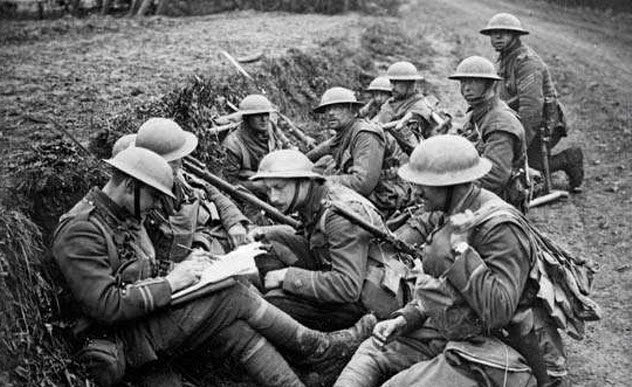
World War I saw the first widespread use of machine guns. To protect themselves, soldiers quickly learned to fire from holes dug into the ground. These holes were soon connected and became miles-long trenches. As the war progressed, up to three extra trenches were dug behind the initial trench. That way, an enemy would still have to deal with about three more trenches even if it managed to defeat the front trench.
The longest trench was at the Western Front where it ran from Belgium into France and down to Switzerland. It was impossible to go around the trench, so the only option was frontal assaults. These were suicide missions because both sides protected their front trenches with barbed wire and machine guns.
The attacking infantry was usually backed with heavy artillery, which itself quickly became a problem and even contributed to the failure of the assaults. An artillery barrage signaled to the enemy that an assault was underway, causing the enemy to quickly reinforce its positions.
The attacking army’s artillery barrage also slowed down its infantry because the shells exploded right in their front. There is little that a soldier can do when under fire from an enemy’s machine guns and their own artillery while crossing a strip of land protected with barbed wire.[6]
4 It Led To The Development Of Tanks
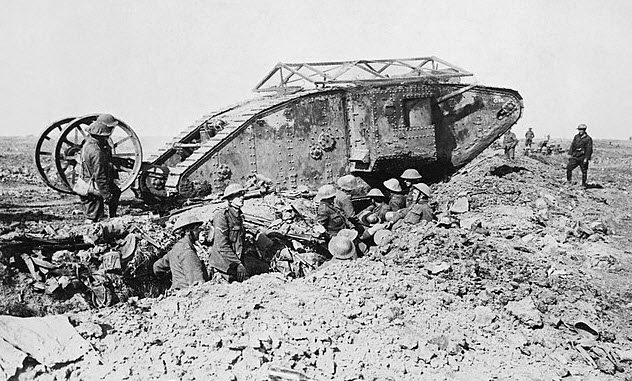
Trench warfare quickly led to a stalemate. No one was winning, and no one was losing. Both sides just continued hiding in their trenches and launching frontal assaults that almost always ended in disaster. Then the tanks showed up.
Before the war, proposals to build tanks in England, France, and Germany had been rejected. However, during the war, England and France secretly and independently worked on building a tank, hoping to use it to break the stalemate. England was the first to build a practical tank, which it deployed to the Battle of the Somme on September 15, 1916.
The Germans fled at the sight of the tanks, which broke through two of the three German trenches. But the tanks had to retreat because of command-and-control problems. They were not perfect, either. Heat and toxic fumes were a big problem for their crews, and the tanks often broke down. Of the 50 deployed, half broke down before the assault.[7]
Germany soon got used to the tanks and developed anti-tank weapons and tactics. However, it was not enough to stop the thousands of tanks deployed by the Allies. By contrast, Germany deployed only 20. Allied tanks breached the German trenches, forcing them to surrender. In essence, machine guns drove soldiers into the trenches and tanks drove them out.
Fun fact: Tanks were originally called land ships.
They are now called tanks because the British military told their workers that they were building “mechanized water tanks” to transport water to British troops in the deserts of today’s Iraq. The workers shortened “mechanized water tanks” to “water tanks” and then “tanks.” Ernest Swinton, a British officer involved in the development of the tank, loved the name and it stuck.
3 It Was Called Everything Except World War I
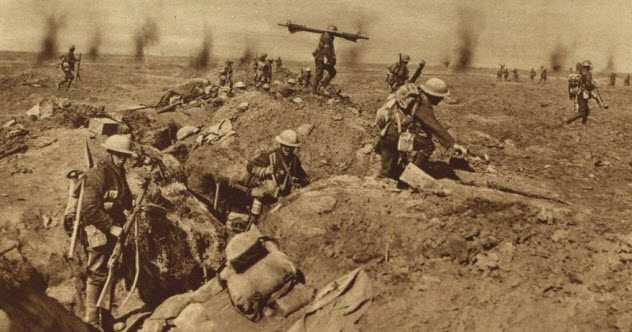
World War I was not called World War I. Obviously, no one knew that a World War II was in the works. In the US, it was called the European War while everyone else called it the Great War. The first mention of “World War” came from the US after American newspapers started using the name when the US got involved in 1917.
The war was called “Great” because of the large number of belligerents involved. It was believed to be the war that would end the evil of the German state and, consequently, every other war. How wrong they were. Besides the Great War, the war was also called “The Great War for Civilization.”[8]
2 It Put The Belligerents In Heavy Debt and Led To The Emergence Of The US As A Superpower
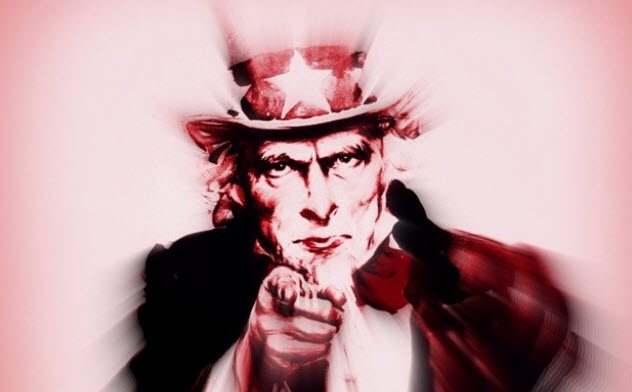
War is expensive, which the belligerents of World War I found out the hard way. The war destroyed the industries and economies of Germany, Russia, Britain, and France. With the exception of Germany, the other three depended on the US for supplies.
The Allies bought so much from the US that the American economy switched from producing civilian goods to military goods. By the time the war was over, the Allies were heavily indebted to the US and even themselves.
For instance, Russia was heavily indebted to France, which was heavily indebted to the US and Britain. France owed Britain more than it owed the US, but Britain itself was heavily indebted to the US. France wanted to repay its debts to the US and Britain with the money Russia owed. However, Lenin refused to pay because it was the tsar’s government and not his that undertook the debt. And the tsar had been overthrown.
On the other hand, Britain depended on the money owed by France and Italy to repay the US. But France couldn’t pay because Russia didn’t pay. France tried repaying its debts with the reparations paid by Germany. But Germany had no money and could only make money if it exported goods to the US. However, the US suffered a recession in the 1920s and could not buy goods imported from Germany.
Things got so bad that the US loaned money to Germany in 1924 so that Germany could pay its reparations to France and Britain. In return, France and Britain used the money to repay their debts to the US.
At the same time, most of the belligerents had abandoned the gold standard at the beginning of the war, leading to the devaluation of their currencies by its end. This left the US with the most gold, and thus the country became the custodian of the global gold standard.
When the US deflated its currency, it put the other nations in a fix because they either needed to deflate their currencies to a value lower than that of the US or redefine the value of their currencies based on the new gold standard determined by the US.
The first option would have led to massive unemployment, while the other would devalue their currencies against the US dollar. Most countries chose the second option, although Britain chose the first. Whichever they chose, the US and the US dollar were still the clear winners.[9]
1 It Contributed To Hitler’s Rise To Power And World War II
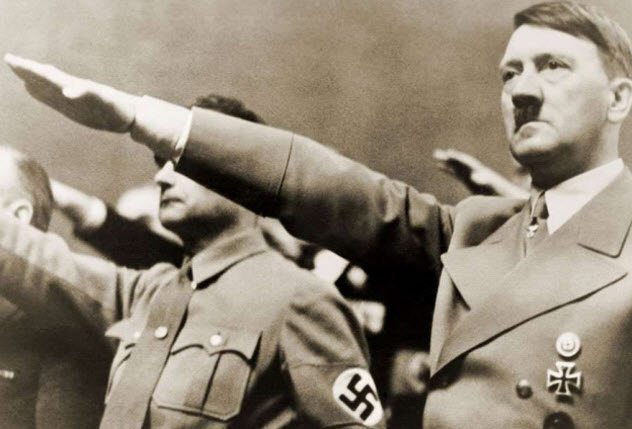
The Treaty of Versailles formally ended World War I. It ordered Germany to repay 269 billion gold marks (Germany’s currency at that time), which is equivalent to 100,000 tons of gold, to the Allies. It also made Germany take the blame for the war. The reparations were later reduced to 112 billion gold marks, but that did little to ease the anti-Allies sentiment in Germany.
This debt put a heavy burden on Germany. In fact, the country only finished paying in 2010. Germany suffered serious economic crises at end of the war. Unemployment was rife, and inflation skyrocketed. Yet the country still had to pay reparations and take the blame for the war. Its citizens didn’t want that.[10]
These were the major factors that brought Adolf Hitler and the Nazi Party to power. The Nazis hammered on the wickedness of the Allies and promised to take the German people out of their misery. When Hitler came to power, he refused to pay more reparations. Instead, he built an army and waged World War II.
This conflict defeated the purpose of the reparations. The Allies had made Germany pay such a huge amount so that it would not have enough money to wage another war. Instead, it had the opposite effect.
The Allies learned from the experience. Although they made Germany pay reparations at the end of World War II, the amount was not as much as demanded after World War I. Instead, the Allies focused on rebuilding the country and punishing its wartime leaders.
Read more bizarre stories about World War I on 10 Bizarre Stories From The Great War and 10 Baffling World War I Mysteries We May Never Solve.








